Why Chrome Won't Save Passwords
The save passwords feature on Chrome allows users to conveniently access various sites without the need to type their password every time. Despite that, you may sometimes fail to find Chrome account password, leading to inconveniences. What leads to the issue of Chrome not saving passwords? Below are the common reasons for this.
- Corrupted Chrome files. In most cases, corrupted files may prevent your browser from working normally. It becomes difficult for the browser to recall or save passwords for corrupted Chrome files.
- Outdated browser. Not having the latest Chrome version can prevent you from accessing its latest features, such as password autosave.
- Incorrect settings. If you've accidentally tampered with your Chrome settings, it becomes hard to save passwords.
- Incompatible Chrome extensions. Chrome extensions allow us to access many functionalities via the browser. However, if you install an extension that isn't compatible with Chrome, you may encounter challenges in accessing the core functionalities of your browser. This could also include remembering passwords.
- Restricting your browser from saving local data. If you've adjusted your Chrome settings and made it not save local data, there's a high chance that it won't save your passwords either. Chrome passwords are usually saved locally before being uploaded to the cloud.
Since you've known the issues that cause Chrome not to save passwords, let's look at the possible fixes.
How to Fix Google Chrome Not Saving Passwords
It's not difficult to solve the issue of Chrome not saving passwords. In this section, we'll discuss ten ways how to solve this issue, including the following:
- Way 1. Logout and Login Again
- Way 2. Check for Passwords Settings
- Way 3. Clear Cache and Cookies
- Way 4. Reset Browser to Default Settings
- Way 5. Allow Google Chrome to Keep Local Data
- Way 6. Disable Chrome Extensions
- Way 7. Check for Chrome Update
- Way 8. Remove Unwanted Programs
- Way 9. Create New Google Profile
- Way 10. Reinstall Chrome
Read on to know which method works best for you!
Way 1. Logout and Login Again
In many situations, a simple logout-login can solve the technical issues preventing Chrome from saving passwords. You can apply this method through the following steps on your Windows computer.
Step 1. Navigate to the top-right of your browser and click the three vertical dots.
Step 2. Go to "Settings" then "You and Google."
Step 3. Click on the "Turn off" button to log out of your Chrome account.

Step 4. Once logged out, you can sign in again to your account.
Step 5. Click on your profile icon, then the button for "Turn on sync."
Step 6. Confirm by clicking on "Yes, I'm in." The password autofill feature should now work normally.
Way 2. Check for Password Settings
Chrome will only save your passwords if you've enabled the feature. You can apply the following steps to check if you've enabled this feature on your browser settings.
Step 1. Navigate to the top right of your browser and click on the three vertical dots.
Step 2. Go to "Settings" then "Autofill."
Step 3. Click on "Password Manage."
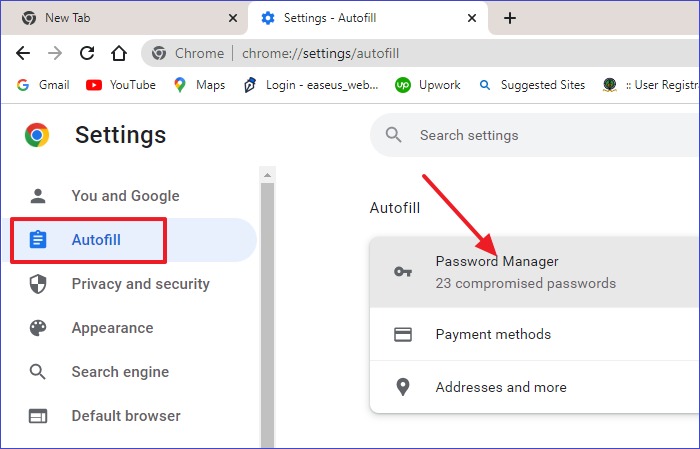
Step 4. Confirm if the setting for "Offer to save passwords" is turned on. If this option is off, ensure you turn it on.
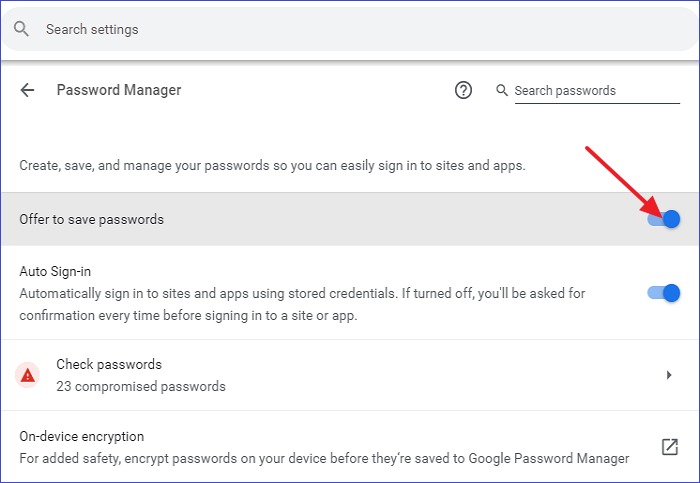
You can also read this article to learn how to check saved passwords on Chrome.
Way 3. Clear Cache and Cookies
If cache and cookies accumulate with time, they may hinder the core functions of your browser. The best thing is to clear them frequently. If Chrome is not saving passwords, you can try clearing caches and cookies and check for any changes. This method will outline how to clear cookies and cache on Windows and Mac.
For Windows
Step 1. Open "Chrome Settings".
Step 2. Go to "Security and Privacy" then "Clear Browsing Data."
Step 3. Check the boxes for "Browsing history," "Cookies and other site data," and "Cached image files."

Step 4. Click on the "Clear data" button. This will remove all the cookies and cache on your browser and possibly solve the not saving passwords issue.
For Mac
Step 1. Navigate to the/Library folder.
Step 2. Delete all Google folders.
Step 3. Reboot your computer.
Way 4. Reset Browser to Default Settings
If you've tried the methods discussed above, but Chrome still can't save your passwords, you can try to set Chrome as default browser. In this method, we'll discuss how to restore your browser to defaults for Android, iOS, and PC.
For Android
Step 1. Open your phone's settings.
Step 2. Go to "Applications," then select "Google Chrome."
Step 3. Tap on "Storage" then "Clear Data." This restores Chrome to default on your phone.
For iOS
Step 1. Open Google Chrome and go to "Settings".
Step 2. Tap on "Privacy."
Step 3. Go to "Clear browsing data." Confirm the selection, and your system will delete all your browsing data.
For PC
Step 1. Open Chrome Settings.
Step 2. Click on "Advanced Settings."
Step 3. Navigate to the "Reset and clean up" settings. Click on "Restore settings to their original defaults."

Step 4. To complete the process, click on "Reset settings."

Way 5. Allow Google Chrome to Keep Local Data
By allowing Chrome to store your local data, it could also secure all the passwords on your computer. You can allow Chrome to keep local data and view Chrome history using the following steps.
Step 1. Open "Settings" on Google Chrome.
Step 2. Navigate to "Privacy and Security."
Step 3. Select "Cookies and other site data."
Step 4. Next, enable "Clear cookies and site data when you close all windows."

Step 5. Restart Chrome to apply the changes.
Way 6. Disable Chrome Extensions
Sometimes, you may find saving your passwords on Chrome problematic due to a malfunctioning extension. The remedy to this is disabling that extension. Since you're unsure which extension is causing problems, you can try disabling one after another and monitor any changes. You can achieve this through the following steps.
Step 1. Click on the three vertical dots on your browser and go to "More Tools."
Step 2. Click on "Extensions" (this displays all the extensions installed on your browser).
Step 3. To disable an extension, toggle it off. Repeat this for one extension after the other and check whether Chrome can now save your passwords.

Way 7. Check for Chrome Update
If you update the latest version of Chrome, it's possible to resolve the password-saving issue. We'll show you how to update Chrome's latest version on Android, iOS, and PC.
For Android
Step 1. Open the Play Store on your Android device.
Step 2. Tap on the profile icon.
Step 3. Tap on "Manage apps & devices."
Step 4. Tap on "Updates available" and check if Google Chrome is available.
Step 5. If a Google Chrome update is available, click on the "Update" button.
Step 6. Download and install the updates.
For iOS
Step 1. Open the App store and click on the profile icon.
Step 2. Search for available Chrome updates and click on "Update."
Step 3. Enter your password to confirm the process.
Step 4. Your device will download and update to the latest version of Chrome.
For PC (Windows and Mac)
Step 1. Open Chrome.
Step 2. Click on the three vertical dots.
Step 3. Go to "Help" then "About Google Chrome."

Step 4. Click "Update Google Chrome." Your PC will update to the latest version of Google Chrome.
Way 8. Remove Unwanted Programs
Some programs installed on your device may prevent Chrome from working properly. You can try removing the programs to prevent Chrome high memory usage and checking if there are any changes.
Step 1. Open Chrome and go to "Settings".
Step 2. Click on "Advanced."
Step 3. Go to "Reset and Clean up" then "Cleanup Computer."

Step 4. Click on "Find."
Step 5. Check the programs you want to remove and click "Remove."
Step 6. Next, restart your computer and check whether the issue has disappeared.
Way 9. Create New Google Profile
If your current Google profile has problems saving passwords, you can try creating a new one. To create a new profile on your smartphone or PC, you can follow the steps below:
For PC
Step 1. Open Chrome and click on your profile.
Step 2. Click on the "Add" button.

Step 3. Enter a new profile name and click "Done."
Step 4. Reboot your computer. Check whether your computer can now save the passwords.
For Smartphones
Step 1. Go to account.google.com.
Step 2. Click on the profile icon.
Step 3. Go to "Manage accounts" and sign out.
Step 4. You can now sign in with the new account.
Way 10. Reinstall Chrome
The last option to solve the Chrome not saving passwords issue is reinstalling it. Reinstalling will clear all the data and settings, preventing the browser from working normally. Below are the methods to reinstall Chrome on iOS and PC.
For iOS
Step 1. Go to "App Menu."
Step 2. Long press on Google Chrome.
Step 3. Go to "Remove App" then "Delete App."
Step 4. Go to the "App store" and download a new application.
For PC
Step 1. Open Control Panel.
Step 2. Click "Program and Features," then go to "Google Chrome."
Step 3. Next, click "Uninstall" to remove the program from your computer.

Step 4. Download a new Chrome setup and install it again.
Bonus Tip: How to Backup Chrome Passwords
Besides saving your passwords on Chrome, keeping a backup is also important. The most recommended way to back up your Google Chrome passwords is using a third-party tool like EaseUS Todo Backup Home.
Secure Download
This software allows you to back up your files or data whenever you need it. It guarantees the safety of your data because it allows you to create a security zone backup for your files. You can also back up your files to an external hard drive, USB drive, HDD, network shared location, or the cloud. It also allows you to create an iso image from your hard drive and back up your PC game save.
Other features of EaseUS Todo Backup include the following.
- System backup and recovery. EaseUS Todo Backup allows you to back up and restore your boot partitions, program files, and system settings.
- Cloud storage backup. A trial version of this software comes with up to 250GB of free cloud storage space for your files and data.
- Compress backup. This feature helps minimize your image backup size. It only keeps a backup copy of the used sectors of your drive.
- System clone. EaseUS Todo Backup allows you to clone boot-related partitions and use them during system migration or when upgrading to a different disk.
Before you start backing your Chrome passwords, you need to find the files that contain the password on your PC.
Step 1. Press Win + R to open the Run dialogue box, copy and paste %UserProfile%\AppData\Local\Google\Chrome\User Data and click OK.

Step 2. Scroll down to locate the Default folder, which saves the data settings related to your Google Chrome account. Open it and find passwords(login data).

Here are the steps to use EaseUS Todo Backup Home.
Step 1. To begin the backup process, click the Select backup contents button.
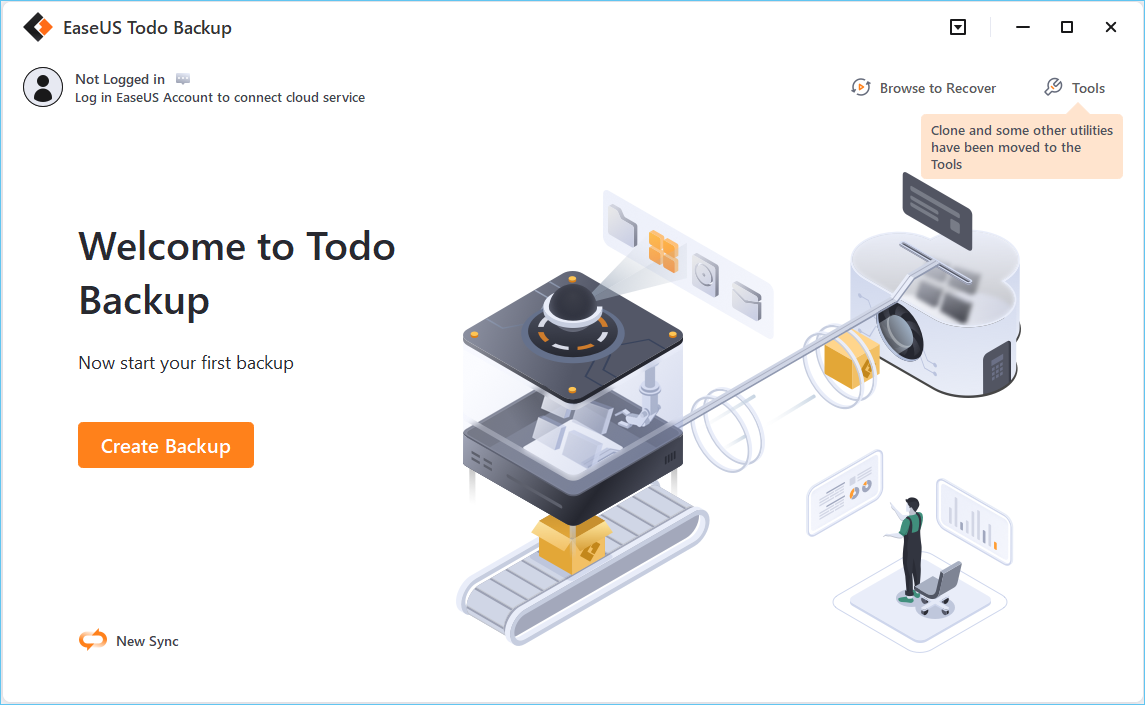
Step 2. Four data backup categories are listed: File, Disk, OS, and Mail.
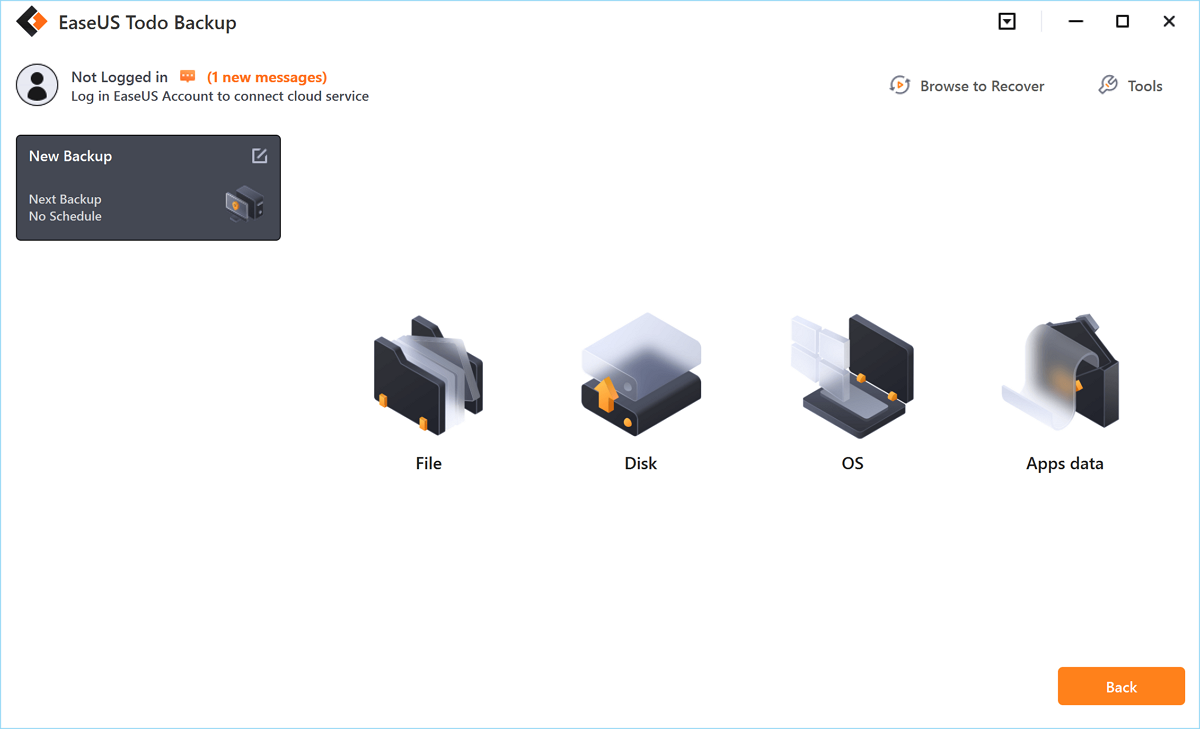
Step 3. Lists of both local and network files are shown on the left-hand side of the screen. Expanding the directory so that you can choose the files to back up.
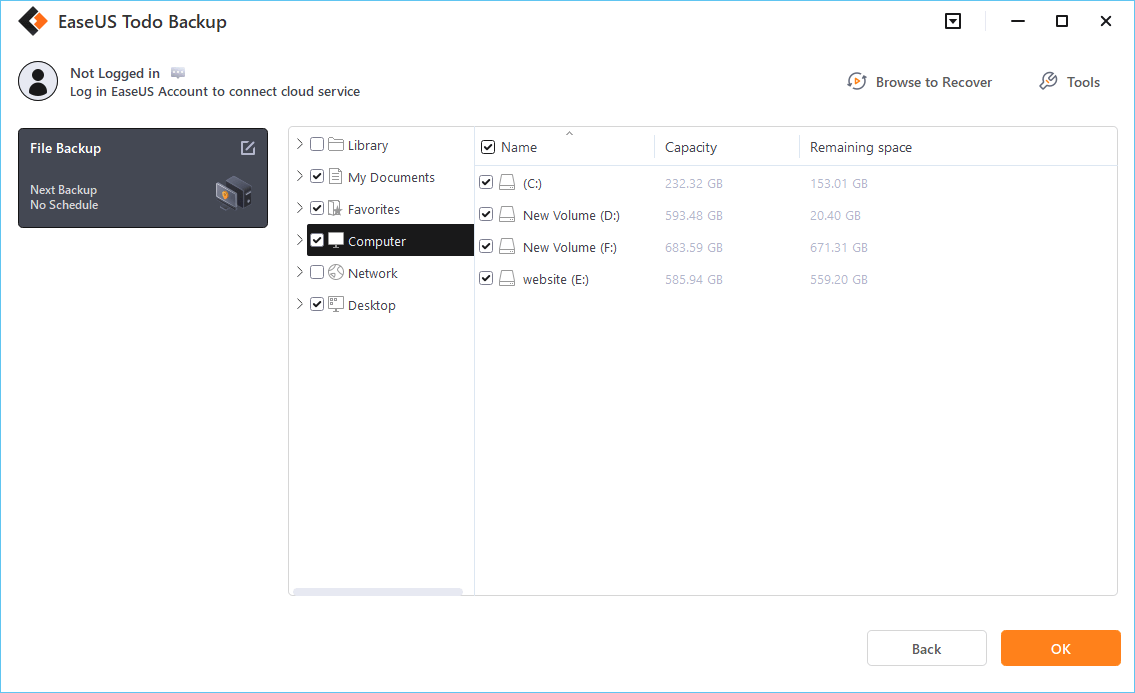
Step 4. Follow the guidance on the screen and choose the place where you want to store the back up.
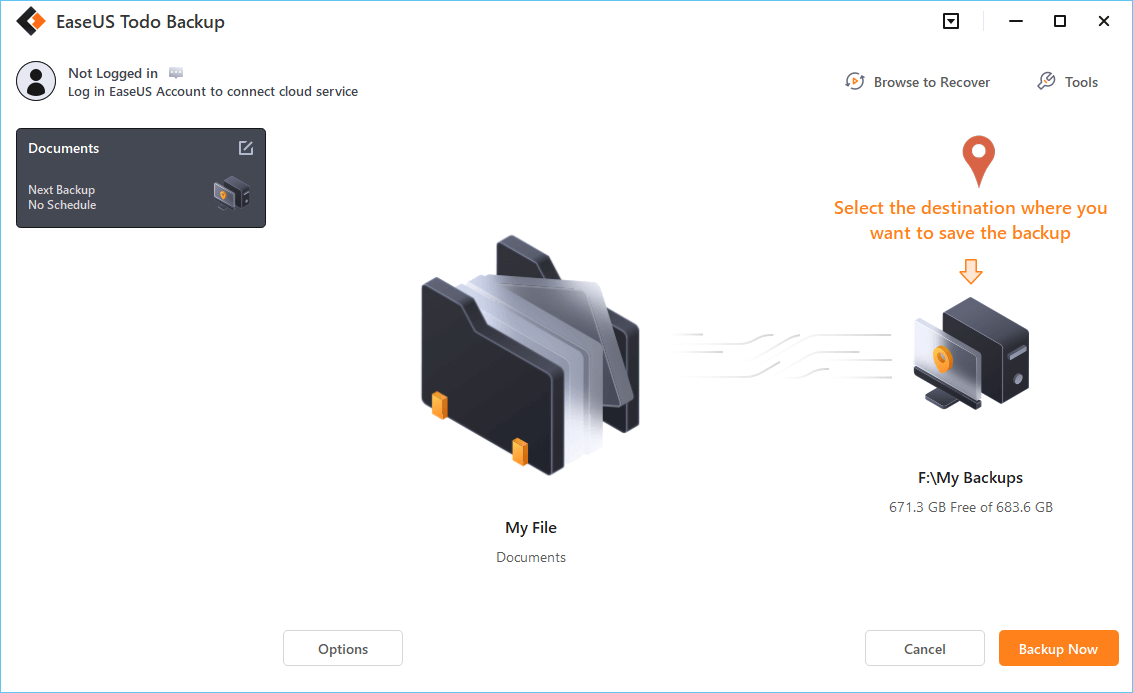
Make sure that the backup is encrypted and set the backup schedule by clicking Options in Backup Options. You can also choose to start the backup at a certain time in Backup Scheme by clicking Options. There are many other customizable options that you can look into.
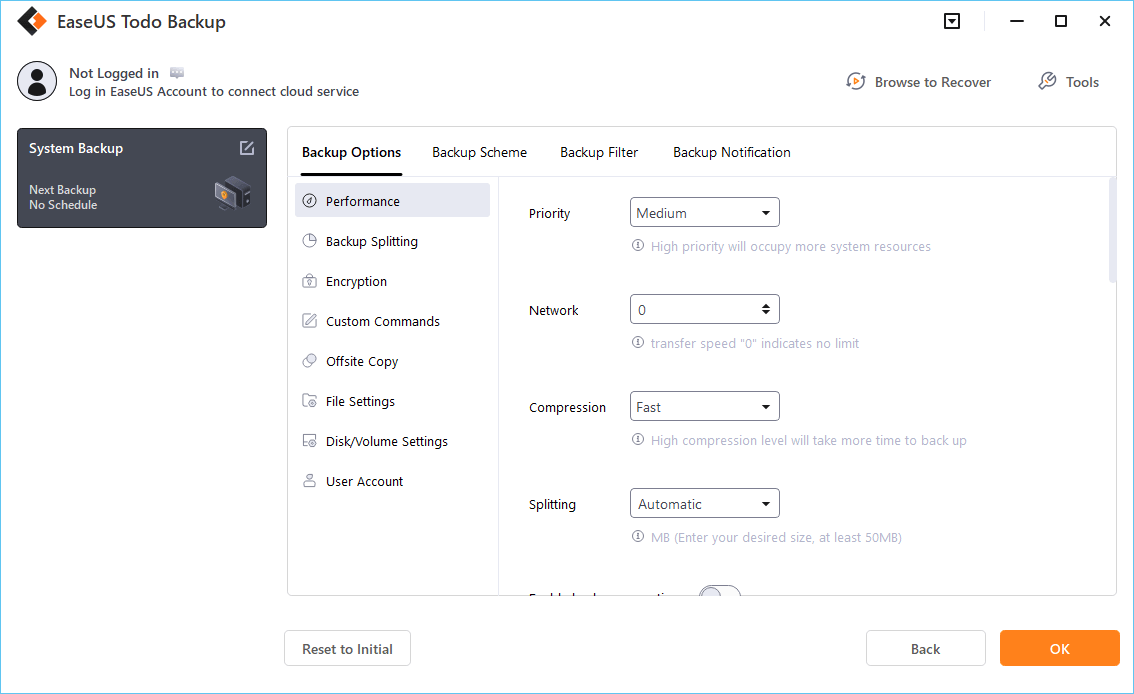
Step 5. You can store the backup file either on your computer, in EaseUS's cloud service, or on a network-attached storage device (NAS).
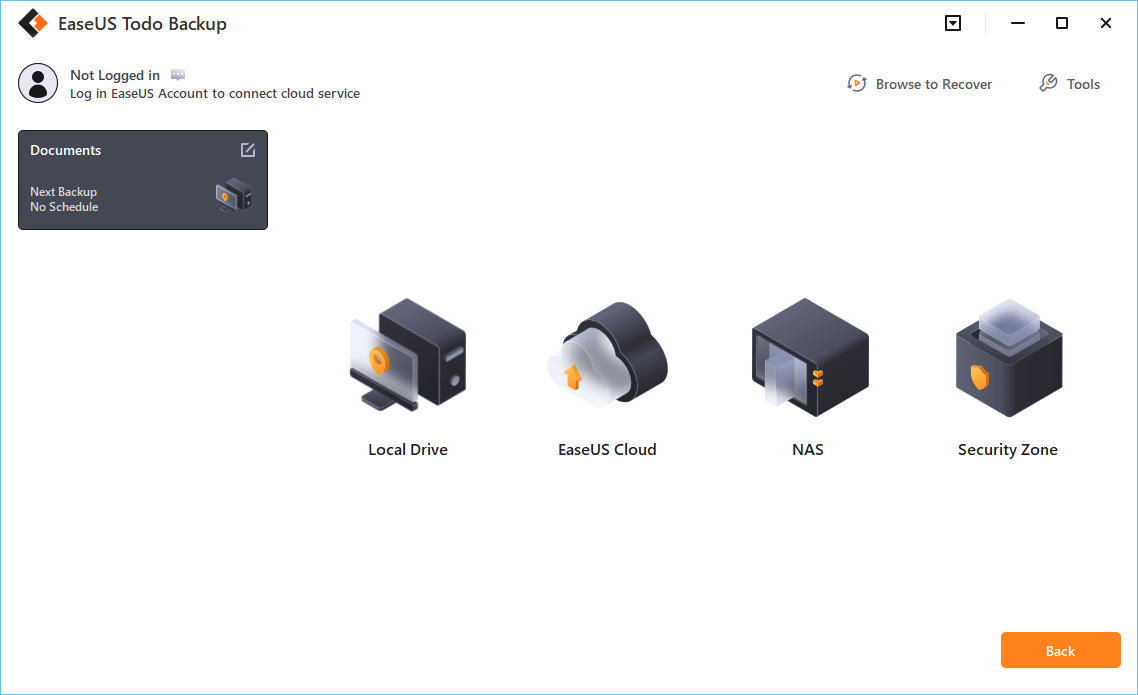
Step 6. EaseUS Todo Backup enables customers store backup copies of their files on a third-party cloud drive or on the company's own cloud storage.
If you want to back up your data on a third-party cloud drive, select Local Drive and scroll down to add Cloud Device. Then fill in your account information.
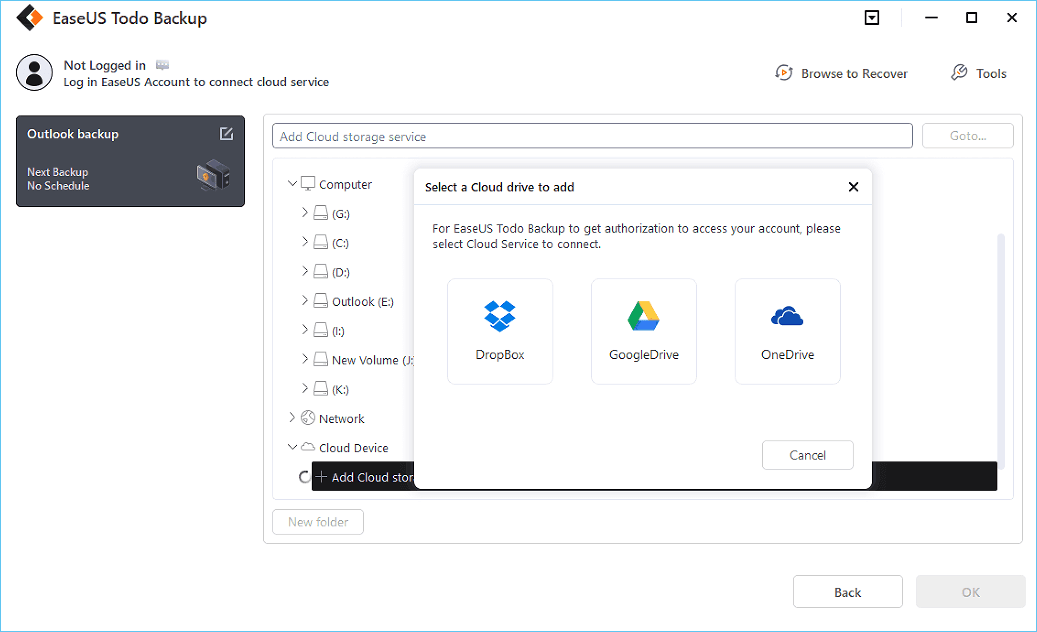
Click EaseUS Cloud, then sign up and log in with your EaseUS account if you wish to store backup files to EaseUS' own cloud storage service.
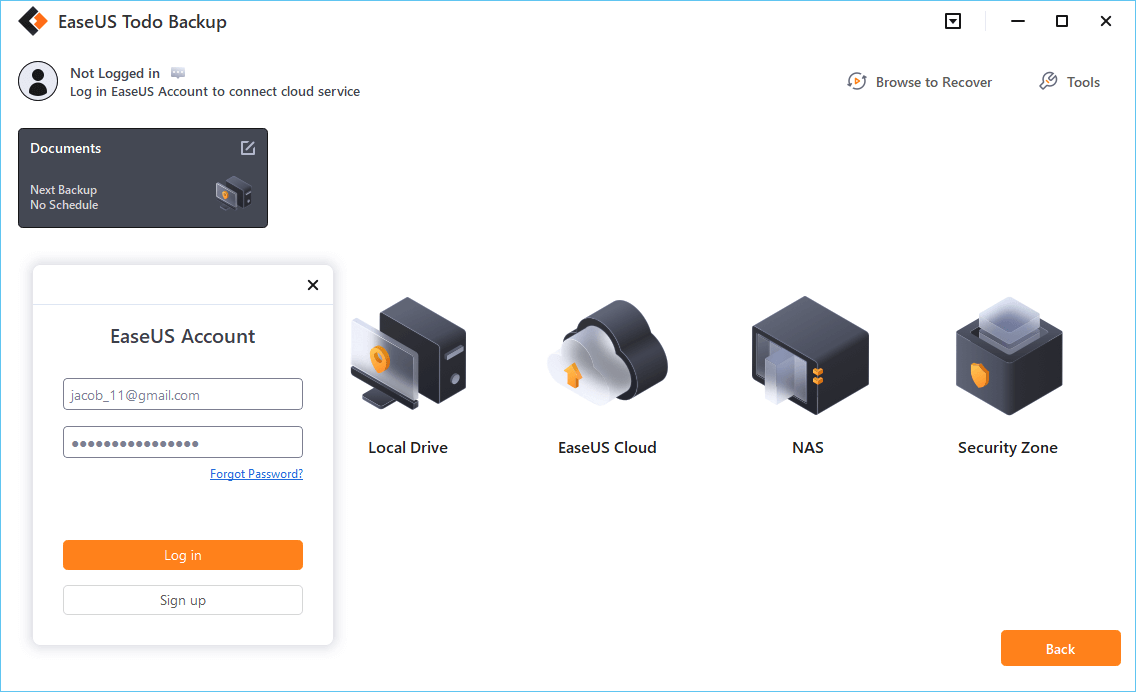
Step 7. Click on Backup Now to start a backup. When the backup process is done, it will display as a card on the left-hand side of the screen. A right-click will let you see more about how to handle the backup job in more depth.
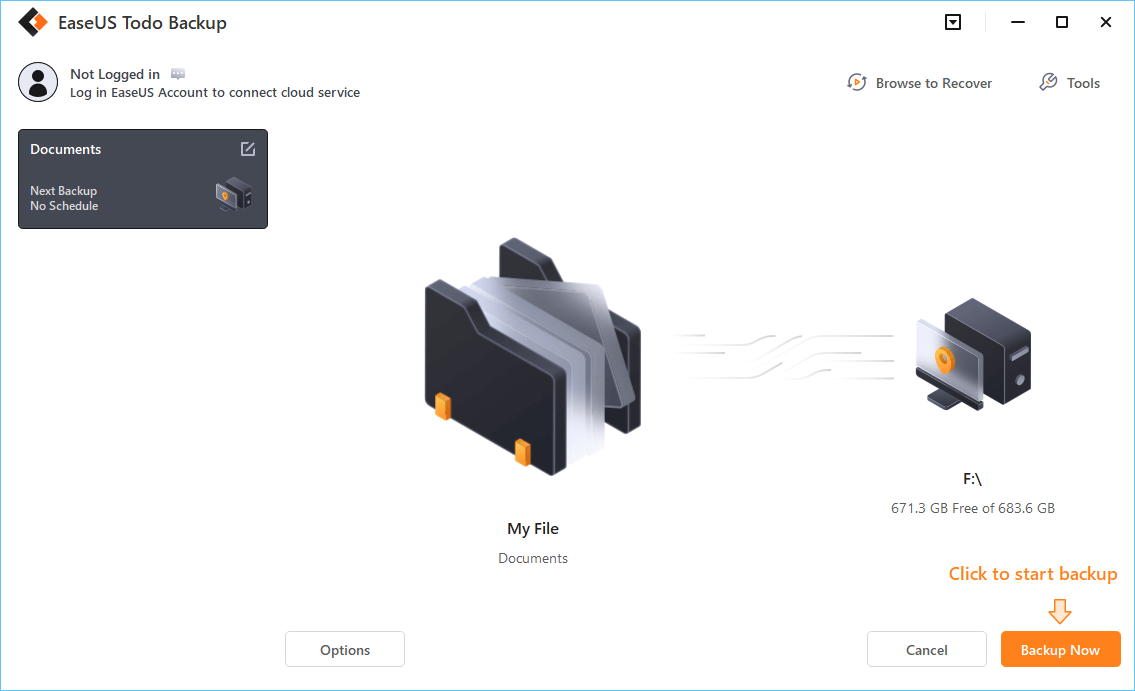
Do you want to get started with EaseUS Todo Backup today? Ensure you download a trial version of the software now. Below are the simple steps to use the software.
The Bottom Line
Chrome may fail to save your password because of issues like corrupted files, an outdated browser, incorrect settings, or incompatible chrome extensions. This article has outlined 10 fixes to solve the Chrome not saving passwords issue. Try out the different methods and determine which works best for you.
The simplest ways to solve the issue include logging out and logging in, enabling password saving, clearing cookies, resetting your browser to defaults, or removing unwanted programs. If you want an additional way to back up your Chrome passwords, you can use EaseUS Todo Backup Home.
This tool allows you to back up your files and data to different locations, including the cloud, a network-shared location, external hard drives, USB drives, etc. Ensure you download and install this software today to enjoy its amazing features.
Secure Download
FAQs on Chrome Not Saving Passwords
Some commonly asked questions about saving your passwords to Chrome include the following.
1. How Do I Force Chrome to Remember a Password?
You can save your passwords automatically to Chrome through the following steps.
Step 1. Navigate to the top right of your browser and click on the three vertical dots.
Step 2. Go to "Settings" then "Autofill."
Step 3. Click on "Passwords."
Step 4. Turn on the option for "Offer to save passwords" is turned on.
2. Are Passwords Stored in Cookies or Cache?
No, your passwords get saved to the Password Manager. Cookies or cache only store temporary website information.
3. Does Clearing Cache in Chrome Delete Passwords?
No, clearing cookies and cache won't delete your Chrome passwords. It only clears your browsing history and other activities, making it easier for Chrome to save your passwords.
Was This Page Helpful?
Updated by Jerry
"I hope my articles can help solve your technical problems. If you are interested in other articles, you can check the articles at the bottom of this page, and you can also check my Facebook to get additional help."
Related Articles
-
How to Fix Apps Not Working on macOS Sonoma
![author icon]() Brithny/2025-02-25
Brithny/2025-02-25 -
Best 6 Practices to Fix Laptop Overheating While Gaming
![author icon]() Jerry/2025-01-24
Jerry/2025-01-24 -
How to Fix PS4 Safe Mode Loop Without Losing Data
![author icon]() Jean/2025-01-24
Jean/2025-01-24 -
How to Increase Phone Memory to Fix Insufficient Storage Error in 5 Ways
![author icon]() Tracy King/2025-02-07
Tracy King/2025-02-07
EaseUS Data Recovery Services
EaseUS data recovery experts have uneaqualed expertise to repair disks/systems and salvage data from all devices like RAID, HDD, SSD, USB, etc.